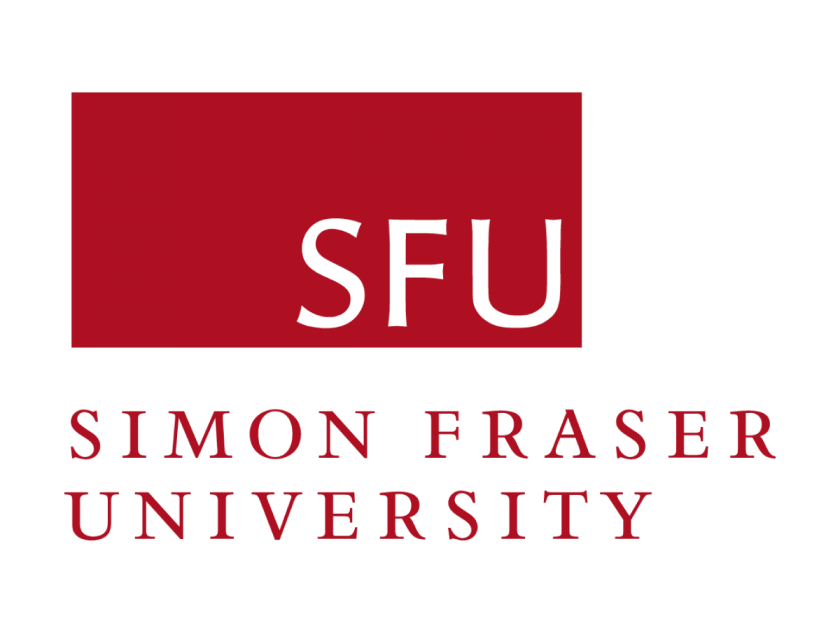Effectiveness of Second Life virtual Learning Environment for Language Training in Hospitality and Tourism
DOI:
https://doi.org/10.2991/assehr.k.210226.003Keywords:
Virtual learning, SL, language education, hospitality, tourism, ESPAbstract
Virtual Learning Environment (VLE) systems have been widely used in higher education as an effective e-learning platform. With its large user community and virtual facilities in various disciplines, including education, recreation, tourism, business, etc. Second Life (SL) has become one of the most dominant VLE systems for hospitality and tourism training. With better student devices and a faster internet connection, language education in Vietnam recently saw soaring interest in using SL for training, especially in an ESP area like English for hospitality and tourism. However, there is still very little research on the effectiveness of SL VLE for language training in hospitality and tourism. This fifteen-week quasi-experimental study was conducted on two classes (n = 81) in order to investigate the effectiveness of SL VLE for language training in hospitality and tourism with a focus on speaking skills. The instruments included English speaking tests, an attitudinal questionnaire, and a semi-structured interview. The findings of the study indicated that language training activities in SL positively contributed to students' language proficiency progress. Besides, students have positive perceptions about the use of SL VLE in their training. It is recommended that language training programs in hospitality and tourism make more substantial use of virtual restaurants, hotels, resorts, and entertainment places in SL to enrich students' learning experience. Hospitality and tourism training institutions should spend resources on formal SL VLE training for teachers and students and build their SL facilities.
References
M. Barak, Are digital natives open to change? Examining flexible thinking and resistance to change, Comput. Educ. 121 (2018) 115–123.
M.Z.C. Had and R.A. Rashid, A review of digital skills of Malaysian English language teachers, Int. J. Emerg. Technol. Learn. 14 (2) (2019) 139–145.
H.Y. Wang, L. Sigerson, and C. Cheng, Digital Nativity and Information Technology Addiction: Age cohort versus individual difference approaches, Comput. Human Behav. 90 (2019) 1–9.
T. Judd, The rise and fall (?) of the digital natives, Australas. J. Educ. Technol. 34 (5) (2018) 99–119.
K. Daniels et al., Learning, and Teaching in Higher Education, Edward Elgar Publishing, (2019).
S. Subhash and E.A. Cudney, Gamified learning in higher education: A systematic review of the literature, Comput. Human Behav. 87 (2018) 192–206.
W.A.R.W.M. Isa et al., 3D virtual learning environment, Int. J. Eng. Adv. Technol. 8 (6 Special Issue 3) (2019) 89–96.
N. Holmes, Engaging with assessment: Increasing student engagement through continuous assessment, Act. Learn. High. Educ. 19 (1) (2018) 23–34.
I. Doumanis et al., The impact of multimodal collaborative virtual environments on learning: A gamified online debate, Comput. Educ. 130 (2019) 121–138.
C. Girvan and T. Savage, Virtual worlds: A new environment for constructionist learning, Comput. Human Behav. 99 (2019) 396–414.
C. Sternig, M. Spitzer, and M. Ebner, Learning in a virtual environment: Implementation and evaluation of a VR math-game, in Virtual Augment. Real. Concepts, Methodol. Tools, Appl., (2018): pp. 1288–1312.
E. Langbeheim and S.T. Levy, Diving into the particle model: Examining the affordances of a single user participatory simulation, Comput. Educ. 139 (2019) 65–80.
W. Xing et al., The effects of transformative and non-transformative discourse on individual performance in collaborative-inquiry learning, Comput. Human Behav. 98 (2019) 267–276.
F.B. Topu and Y. Goktas, The effects of guided-unguided learning in 3d virtual environment on students’ engagement and achievement, Comput. Human Behav. 92 (2019) 1–10.
D. Cudeiro et al., Capture, learning, and synthesis of 3D speaking styles, in Proc. IEEE Comput. Soc. Conf. Comput. Vis. Pattern Recognit., (2019): pp. 10093–10103.
U. Gulec et al., A 3D virtual environment for training soccer referees, Comput. Stand. Interfaces 64 (2019) 1–10.
J. Abdullah, W.N. Mohd-Isa, and M.A. Samsudin, Virtual reality to improve group work skill and self-directed learning in problem-based learning narratives, Virtual Real. 23 (4) (2019) 461–471.
C. Carbonell-Carrera and J.L. Saorin, Virtual learning environments to enhance spatial orientation, Eurasia J. Math. Sci. Technol. Educ. 14 (3) (2018) 709–719.
D. Wang, Gamified learning through unity 3D in visualizing environments, Neural Comput. Appl. 29 (5) (2018) 1399–1404.
R. Phungsuk, C. Viriyavejakul, and T. Ratanaolarn, Development of a problem-based learning model via a virtual learning environment, Kasetsart J. Soc. Sci. 38 (3) (2017) 297–306.
Y.J. Lan, I.Y.T. Hsiao, and M.F. Shih, Effective learning design of game-based 3D virtual language learning environments for special education students, Educ. Technol. Soc. 21 (3) (2018) 213–227.
D. Viktoria et al., Virtual and Augmented Reality in Language Acquisition, in (2018).
A.M. De Jesus Ferreira Nobre, Multimedia technologies and online task-based foreign language teaching-learning, Tuning J. High. Educ. 5 (2) (2018) 75–97.
S. Canto, K. Jauregi, and H. Van Den Bergh, Integrating cross-cultural interaction through video-communication and virtual worlds in foreign language teaching programs: Is there an added value?, ReCALL 25 (1) (2013) 105–121.
J.C.C. Chen, The crossroads of English language learners, task-based instruction, and 3D multi-user virtual learning in Second Life, Comput. Educ. 102 (2016) 152–171.
J. Legault et al., Immersive Virtual Reality as an Effective Tool for Second Language Vocabulary Learning, Languages 4 (1) (2019) 13.
B.P. Hung, V. Truong, and N.V. Nguyen, Students' responses to CL-based teaching of English prepositions, Edit. Arastirmalari - Eurasian J. Educ. Res. 2018 (73) (2018) 41–58.
C.V. Huy, N.T. Luong, and N.N. Vu, Blended learning in badminton training for professionals: students’ perceptions and performance impacts, Eur. J. Phys. Educ. Sport Sci. 6 (6) (2020) 28–36.
J.C.C. Chen, The interplay of tasks, strategies and negotiations in Second Life, Comput. Assist. Lang. Learn. 31 (8) (2018) 960–986.
G. Wadley and M.R. Gibbs, Speaking in Character: Voice Communication in Virtual Worlds, in W. Bainbridge (Ed.), Online Worlds Converg. Real Virtual. Human-Computer Interact. Ser., Springer, London, (2010): pp. 187–200.
C.R. Wigham and T. Chanier, A study of verbal and nonverbal communication in Second Life-the ARCHI21 experience, ReCALL 25 (1) (2013) 63–84.
M. Berger, A.H. Jucker, and M.A. Locher, Interaction and space in the virtual world of Second Life, J. Pragmat. 101 (2016) 83–100.
F.C. Saunders and A.W. Gale, Digital or didactic: Using learning technology to confront the challenge of large cohort teaching, Br. J. Educ. Technol. 43 (6) (2012) 847–858.
M. Bouton et al., Cooperation-Aware Reinforcement Learning for Merging in Dense Traffic, in 2019 IEEE Intell. Transp. Syst. Conf. ITSC 2019, (2019): pp. 3441–3447.
L. van Lier, The Ecology of Language Learning and Sociocultural Theory, in Encycl. Lang. Educ., (2008): pp. 2949–2961.
E.F. Wolff, Virtual Tutoring Pilot Program: Questions and Considerations for the Future, J. Online Learn. Teach. 5 (2) (2009) 325–341.
S. Jackson and C. Fearon, Exploring the role and influence of expectations in achieving VLE benefit success, Br. J. Educ. Technol. 45 (2) (2014) 245–259.
Downloads
Published
How to Cite
Issue
Section
License
Copyright (c) 2021 Nguyen Ngoc Vu, Vo Thuy Linh, Nguyen Thi Thu Van, Nguyen Thi Hong Lien

This work is licensed under a Creative Commons Attribution 4.0 International License.
Copyright
The copyright of all articles published in the Proceedings of the AsiaCALL International Conference (paic) remains with the Authors, i.e. Authors retain full ownership of their article. Permitted third-party reuse of the open access articles is defined by the applicable Creative Commons (CC) end-user license which is accepted by the Authors upon submission of their paper. All articles in the aicp are published under the CC BY-NC 4.0 license, meaning that end users can freely share an article (i.e. copy and redistribute the material in any medium or format) and adapt it (i.e. remix, transform and build upon the material) on the condition that proper attribution is given (i.e. appropriate credit, a link to the applicable license and an indication if any changes were made; all in such a way that does not suggest that the licensor endorses the user or the use) and the material is only used for non-commercial purposes.








